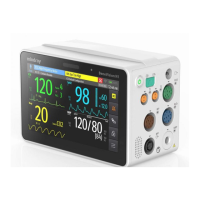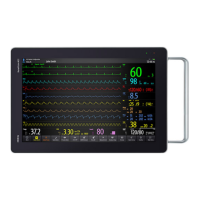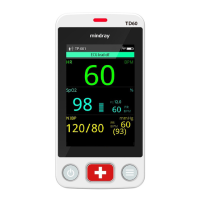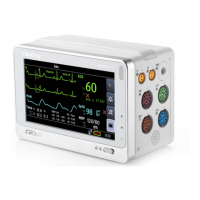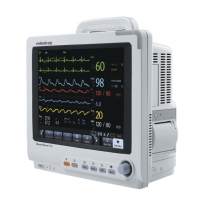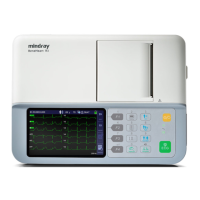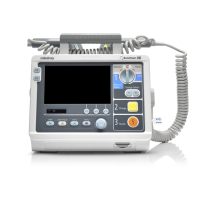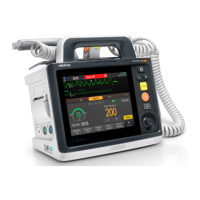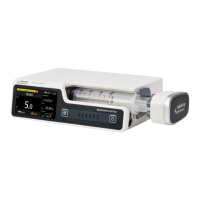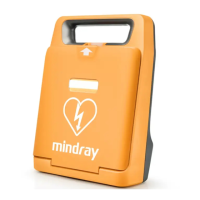BeneVision N Series Patient Monitor Operator’s Manual D - 5
D.2.4 SpO
2
Technical Alarm Messages
D.2.5 Temp Technical Alarm Messages
Alarm message Default priority
Indication on
alarm reset
Cause and solution
SpO2/SpO2b Sensor Off Adjustable B The SpO
2
sensor has become detached from the
patient or the module. Check the sensor
connection. If the alarm persists, replace the
sensor.
SpO2/SpO2b No Sensor Low A The SpO
2
extension cable is detached from the
SpO
2
module, or the SpO
2
sensor is detached
from the SpO
2
extension cable. Check the SpO
2
cable and the sensor connection. If the alarm
persists, replace the sensor.
SpO2/SpO2b Excess Light Low C Ambient light is too strong. Move the sensor to a
place with lower level of ambient light or cover
the sensor to minimize the ambient light.
SpO2/SpO2b No Pulse Low C The SpO
2
sensor failed to obtain pulse signal.
Check the patient’s condition and replace the
sensor application site. If the alarm persists,
replace the sensor.
SpO2/SpO2b Sensor
Incompatible
Low C Incompatible or an unspecified SpO
2
sensor is
used. Use specified sensors.
SpO2/SpO2b Low Signal
Quality
Low C 1. Check the sensor and sensor position.
2. Make sure the patient is not shivering or
moving.
3. The patient’s pulse may be too low to be
measured.
SpO2/SpO2b Interference Low C The SpO
2
signal has been interfered. Check for
any possible sources of signal noise and check
the patient for excessive motion.
SpO2/SpO2b Sensor Error Low C Replace the sensor and measure again.
SpO2/SpO2b Searching
Pulse
Prompt / SpO
2
is searching for pulse.
SpO2/SpO2b Low
Perfusion
Prompt / The SpO
2
sensor is not properly placed or the
patient’s perfusion index is too low.
1. Check the sensor and sensor position.
2. Reposition the sensor if necessary.
Alarm message Default priority
Indication on
alarm reset
Cause and solution
T1/T2 Sensor Off Low A Check the sensor connection and reconnect the
sensor.
TempIF Ambient Temp
High (for tympanic
thermometer)
Low A The ambient temperature is too high. Move the
patient to a cooler place and take temperature
measurement again if necessary.
TempIF Ambient Temp
Low (for tympanic
thermometer)
Low A The ambient temperature is too low. Move the
patient to a warmer place and take temperature
measurement again if necessary.
TempIF Overrange (for
tympanic thermometer)
Low C The temperature measurement exceeds the
measurement range. Check the patient’s
condition.
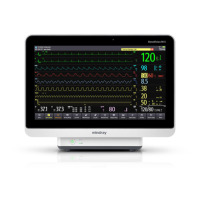
